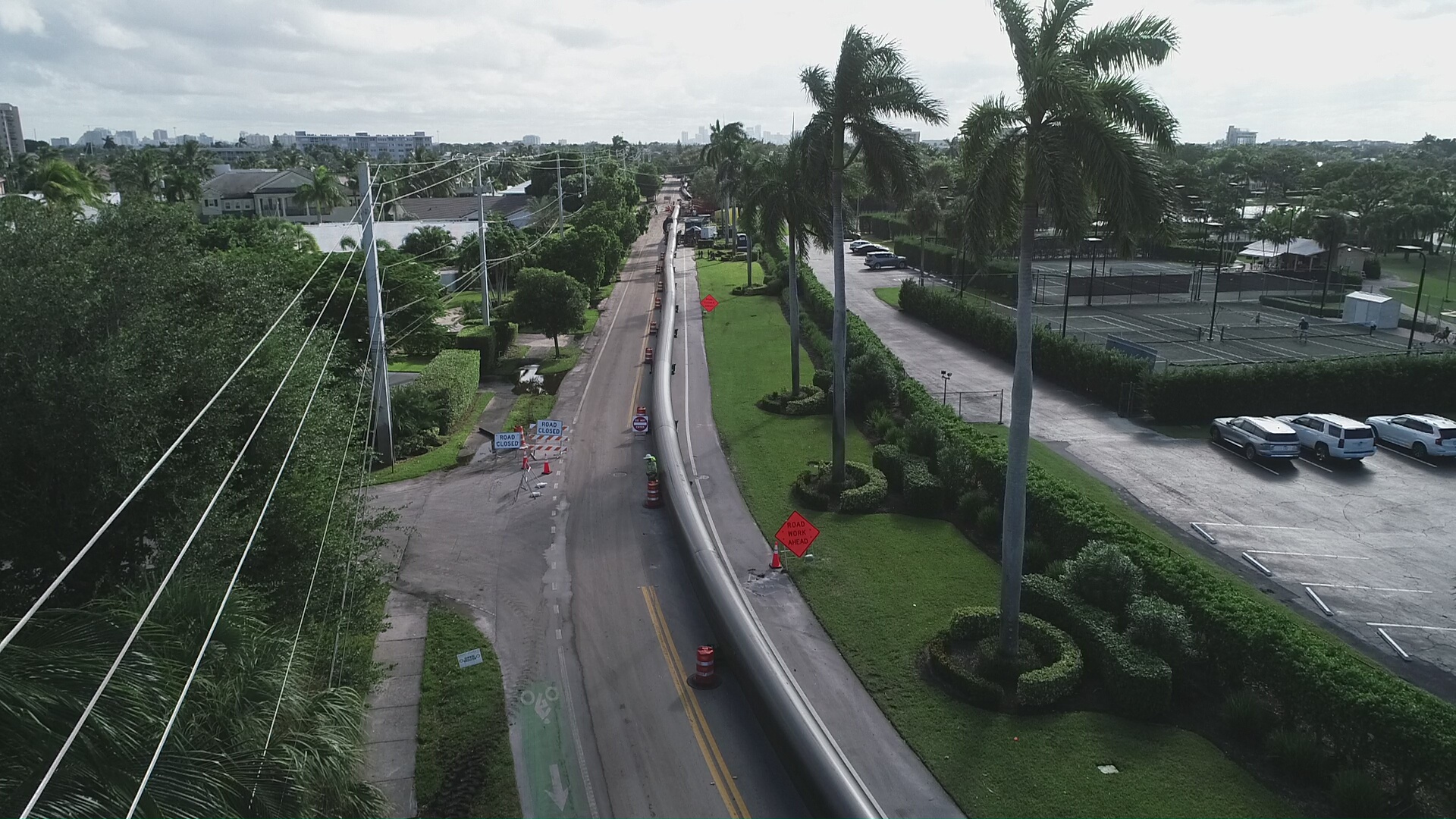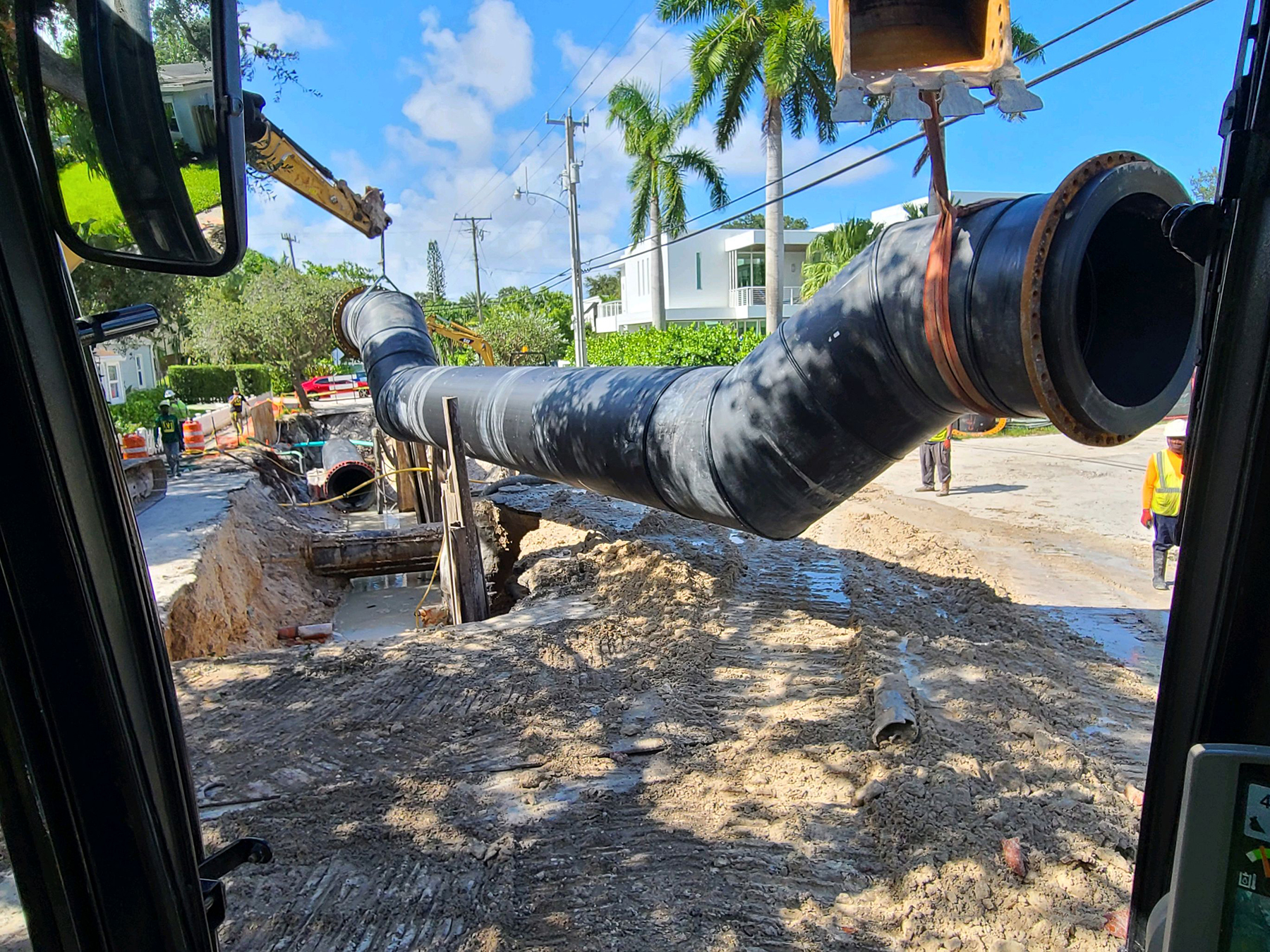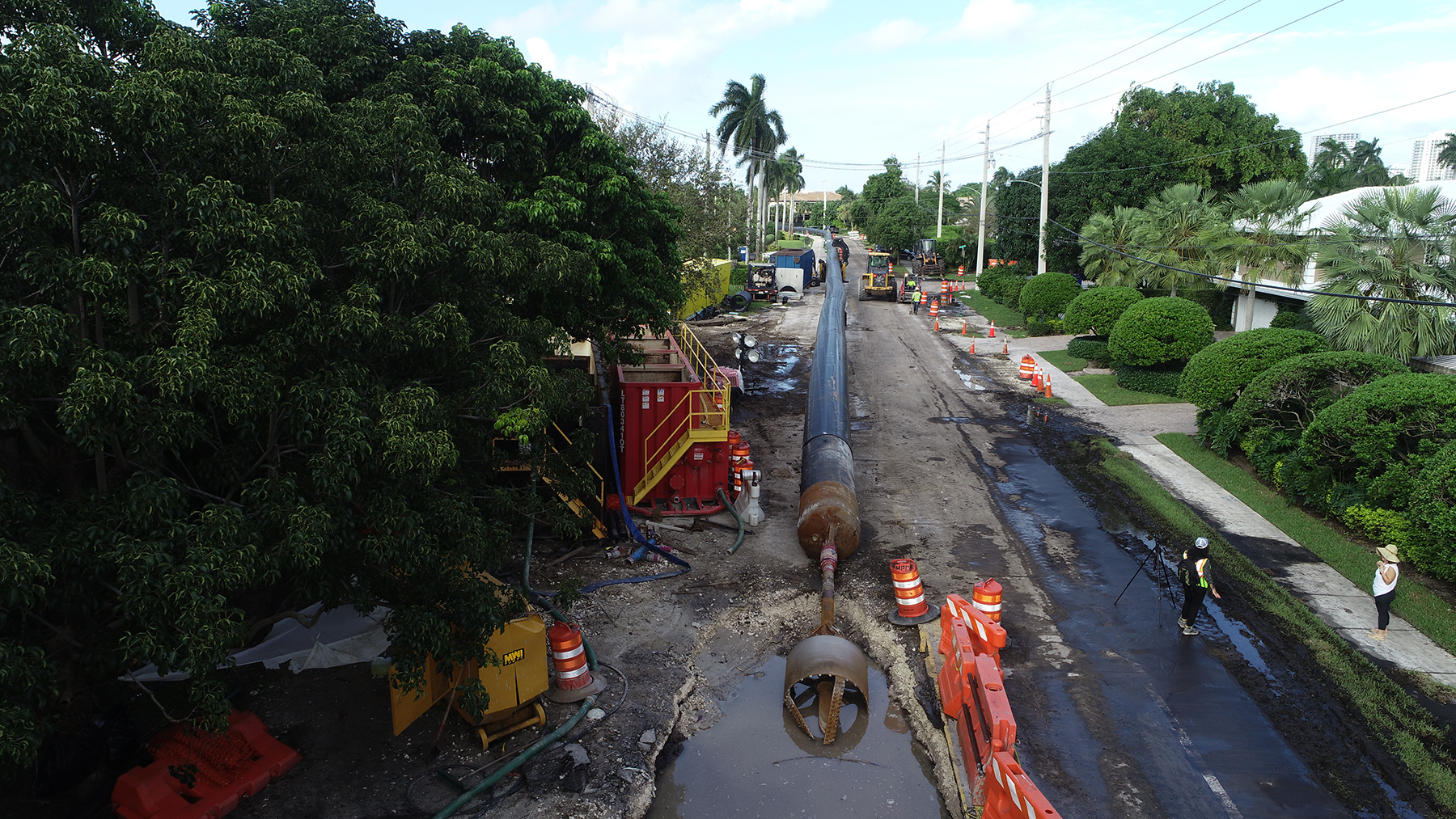Between December 2019 and February 2020, a series of sewer main breaks led to the release of approximately 219 million gal. of raw sewage into environmentally sensitive waterways within the city of Fort Lauderdale, Florida. The disaster served as a wake-up call, prompting the city to ramp up its efforts to rehabilitate its aging sewer network. Since then, Fort Lauderdale has progressed quickly on a key rehabilitation project, the construction of a new 7.5 mi long redundant force main that will convey untreated wastewater under pressure. The construction of this redundant force main will enable the city to repair the existing force main that experienced the previous breaks. Meanwhile, Fort Lauderdale expects to begin soon environmental restoration efforts in the two water bodies that bore the brunt of the sewage releases.
Brittle pipes break
Home to nearly 190,000 people, Fort Lauderdale relies on an aging sewer network, the majority of which is 50-60 years old, says Raj Verma, P.E., M.ASCE, the city’s director of public works. “Most of our major pipes are from the ’60s and ’70s,” Verma says. Because the area’s high water table causes a “relatively corrosive environment,” he says, the city’s aging sewer pipes over time became “very brittle.” The pipes are made up of cast iron and ductile iron.

These conditions led to multiple sewer line breaks in recent years. Several ruptures in a 54 in. diameter force main in December 2019 released nearly 114 million gal. of untreated sewage into the Tarpon River, the Himmarshee Canal, and three neighborhoods. In February 2020, the same force main experienced another break at a location farther north, releasing nearly 105 million gal. of raw sewage during a 10-day period into George English Lake, a small body of water connected to the Middle River.
Fort Lauderdale needs to upgrade its entire sewer system. “The infrastructure has not been maintained to the level it should have been,” says Verma, who began working for Fort Lauderdale in January 2020. Working with the consulting engineering firm Hazen and Sawyer, the city of Fort Lauderdale conducted a condition assessment of its force mains to identify those in greatest need of immediate attention. This process also relied on the “historical knowledge of our staff” to identify locations that have been most prone to problems, Verma says. “We have combined both science and theory and the practical experience of our staff to come up with priority projects.”

Redundancy is resiliency
Foremost among these is the design and construction of the new 7.5 mi long redundant sewer force main, which will convey sewage from the northern end of the service area to the G.T. Lohmeyer Wastewater Treatment Plant. In January 2020, the Fort Lauderdale City Commission approved $65 million for the project. Upon completion, the new force main, which will consist of high-density polyethylene pipe to better resist corrosion, will enable the city to shut down and rehabilitate its existing force main.
Having both force mains in place once the existing main has been rehabilitated will then afford the city a greater measure of latitude in terms of operations, says Krishan Kandial, P.E., the project manager for the city. “In the event anything happens, we can have redundancy,” Kandial notes, “(because) we are building a parallel system.”
At the same time, the city will be better positioned to maintain these critical facilities in the future. The redundant force main will “ensure that 50 or 60 years down the road, the coming generation doesn’t have to go through the pains that we are going through now,” Verma says.

The project is being conducted in two segments and is about 65 percent complete. Murphy Pipeline Contractors Inc. is constructing the northern segment, which comprises 4.5 mi of 48 in. diameter pipe. David Mancini & Sons Inc. is constructing the southern segment, which consists of 3 mi of 54 in. diameter pipe. Working simultaneously, the two contractors are constructing the tunnel from different directions using various methods, including horizontal directional drilling. The overall project will be completed this summer.
As for other efforts to improve its sewer network, Fort Lauderdale plans to replace and upsize other force mains, upgrade lift stations (also known as pump stations), and line existing gravity sewers. In 2018, the city issued $200 million worth of bonds to cover some of these costs. “The second tranche is going to be happening in 2023 for another $200 million,” Verma says. The overall sewer repair effort is scheduled for completion in the next eight to 10 years and could end up costing between $800 million and $1 billion, he says.
Assessments by the city of areas within the Tarpon River and George English Lake that were most severely affected by the large sewage spills have found “no residual impacts that are contributing to water quality degradation,” Verma says. “Water quality has returned to original levels.” That said, the city still plans to remove from both bodies of water shallow deposits of inert solids that remain from the sewage spills.
Suction dredging will be used for these efforts, Verma says. Expected to begin in the spring once the necessary permits have been obtained, the combined projects likely will cost on the order of $1.5 million. Fort Lauderdale also is assessing the extent to which environmental restoration is needed in the Himmarshee Canal.




